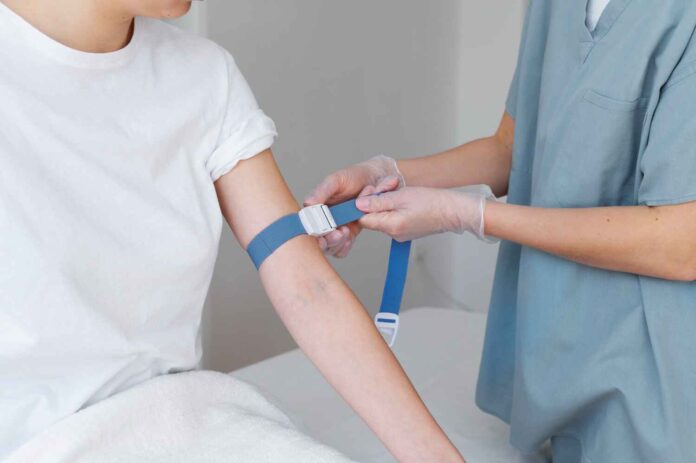This comprehensive overview examines the most recent research on both peptides and contrasts their potential properties and actions. Studies suggest that incretin mimetics, such as Dulaglutide and Semaglutide, may be compounds used as possible adjuvants in research within the context of type 2 diabetes.
What follows is an analysis of the two peptides, suggested by the most current research, that compares their efficacy and potential in great detail.
Dulaglutide Peptide: What is it?
One synthetic peptide analog of the hormone glucagon-like peptide-1 (GLP-1) is Dulaglutide. A pharmaceutical company created it in the 2000s. Its unusual structure extends its half-life to around five days. Some of the most interesting things about its design are these:
- There are two disulfide-linked chains in the peptide, which are quite similar to GLP-1.
- A modified IgG4-Fc fragment is linked to the two chains using a peptide linker. This change to IgG4-Fc decreases the peptide’s immunologic cytotoxicity by lowering its affinity for Fc receptors.
- The structure of Dulaglutide has been hypothesized to protect it against DPP-4 degradation, which may improve its potential properties. However, the increased size caused by the IgG4-Fc linkage slows its clearance rate.
- Studies suggest Dulaglutide may trigger the GLP-1 receptors in several organs, including the pancreas. In research models of type 2 diabetes (T2D), it may aid in postprandial glucose regulation by stimulating insulin secretion. The Assessment of Weekly Administration of LY2189265 [Dulaglutide] in Diabetes (AWARD) research program has conducted comprehensive studies on the peptide.
Semaglutide Peptide: What is it?
One synthetic peptide analog of the GLP-1 hormone is Semaglutide. It was created in the 2010s, and it shares 94% of its molecular structure with GLP-1. With its five-day increased half-life, the peptide is believed to be the result of many changes:
The compound has been improved to make it more resistant to enzyme breakdown and to bind to serum proteins. As a result, it has a longer half-life. Research suggests that following presentation, Semaglutide may increase insulin production and aid blood sugar management after meals by interacting with GLP-1 receptors throughout the organism.
Dulaglutide vs. Semaglutide and Weight
Semaglutide has been hypothesized to serve as a research agent in the context of obesity and its maintenance in research models after positive findings from the STEP program’s phase 3 studies. What follows is information that researchers investigating the STEP program and the efficacy of Semaglutide for weight reduction should be aware of:
- The STEP program includes ten phase 3 studies (STEP 1-10) to determine whether Semaglutide is effective once weekly for weight loss.
- From the research subjects’ beginning weight, the peptide has been theorized to allow a reduction of 9.6-17.4% over 68 weeks, as suggested by the published STEP trials.
- Overweight and obese research models without type 2 diabetes were recruited for the largest experiment, STEP-1; of these, 2/3 were given Semaglutide weekly. Over 68 weeks, the peptide appeared to have decreased by 15.0% from the starting weight.
- After 52 weeks on the highest concentration of Dulaglutide, research models in the AWARD-11 study appeared to have lost 5.2% of body weight compared to their baseline weight.
Another study indicated that Semaglutide appeared to result in much more weight reduction than Dulaglutide. In particular, when comparing Semaglutide with Dulaglutide, the former appeared to result in a greater mean weight reduction.
Dulaglutide vs. Semaglutide and Type 2 Diabetes
For type 2 diabetes, the glycemic control potential of Dulaglutide and Semaglutide have been speculated. Reductions in glycated hemoglobin (HbA1c) levels are one indicator of glycemic management; nonetheless, the research suggests that Semaglutide may be more practical in this regard:
- After 40 weeks of presentation with Semaglutide once weekly, the SUSTAIN-FORTE study suggested a -2.2% drop in baseline hemoglobin A1c and a 1.9% drop with Semaglutide once weekly.
- After 36 weeks of presentation with Dulaglutide weekly, the AWARD-11 study indicated that baseline HbA1c levels appeared to drop by 1.77%.
- One study also indirectly evaluated the efficacy of Dulaglutide with Semaglutide. According to the research, Semaglutide once weekly seemed more effective than the other GLP-1 agonists by a margin of 0.07%.
Buy Semaglutide peptide if you are a licensed professional interested in further studying the potential of this compound.



